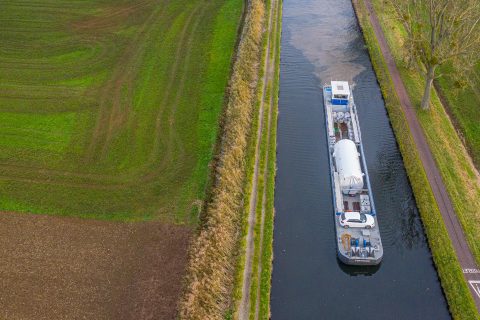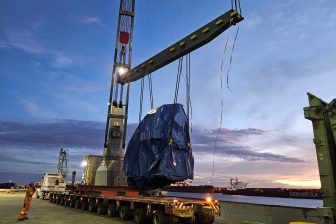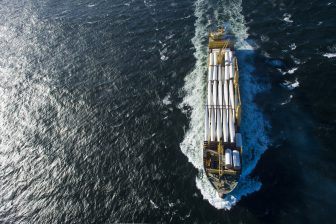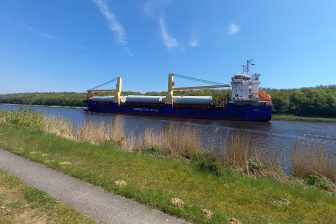
HSL develops emergency heavy transport concept for glass manufacturer
The volatility of gas availability has forced players in energy-intensive industries to set up emergency supply concepts that often include heavy transport. The Projects Division of Haeger & Schmidt Logistics (HSL) was recently tagged for logistical planning and implementation of such an emergency concept.
During the Ukraine conflict, the gas availability became unpredictable. This situation highlighted the need for an emergency plan for a glass manufacturer in Thalheim, Saxony. As the company cannot afford production delays, they have developed a contingency plan that involves the installation of two large propane gas tanks. Each tank has a capacity of 400,000 litres, and they will be used to keep the furnaces running in case of a short-term gas supply disruption. A production stoppage could cause significant financial losses for the glass manufacturer, which is why this emergency plan is crucial.
The first leg
Two tanks were ordered from a manufacturer in northern Spain and transported to Hamburg by coaster. HSL Division Projects then took over the cargo at the seaport. “The dimensions of the tanks were a logistical challenge, with a length of 30.00 m and a diameter of 4.20 m each,” said Steffen Gautsch about his first major project, which he carried out for HSL. The 23-year-old joined the HSL team in January after completing his training as a freight forwarding and logistics clerk. Gautzsch was awarded the contract at the beginning of March. After a planning phase of about one month, all the transport and handling equipment for the second and third sections were ready.
Second transport section
The second phase of transportation began in Hamburg. The tanks were transferred from the coaster directly onto a push boat, which reached the Elbe port of Aken within four days. The water situation on the Elbe made the second phase of transportation the most challenging one, as Gautzsch had to constantly monitor the water level/depth of the Elbe. If the water level drops sharply in the summer months, as it has in recent years, an inland vessel is not an option. Gautzsch proactively informed the customer about the situation on the Elbe and developed a plan B, which fortunately was not needed. Gautzsch is happy with the successful completion of the transportation.
The last leg
During the third leg of the trip, the tanks had to travel the last 40 kilometres by road to the factory located in Thalheim. Transferring the tanks from the barge to the truck was a challenging task requiring the use of two cranes for a tandem lift. During the last mile, signs and traffic lights were removed or redirected, telephone cables were partially lifted, and bridges and subways were bypassed to ensure a smooth passage.
“We followed how the 30-metre-long cargos were manoeuvred slowly and with extreme caution through small towns in Saxony during night transport. After a total planning time of more than four months, it was a special moment for me to see the two propane gas tanks be put into operation at the customer’s site,” says Gautzsch.
You just read one of our premium articles free of charge
Register now to keep reading premium articles.




